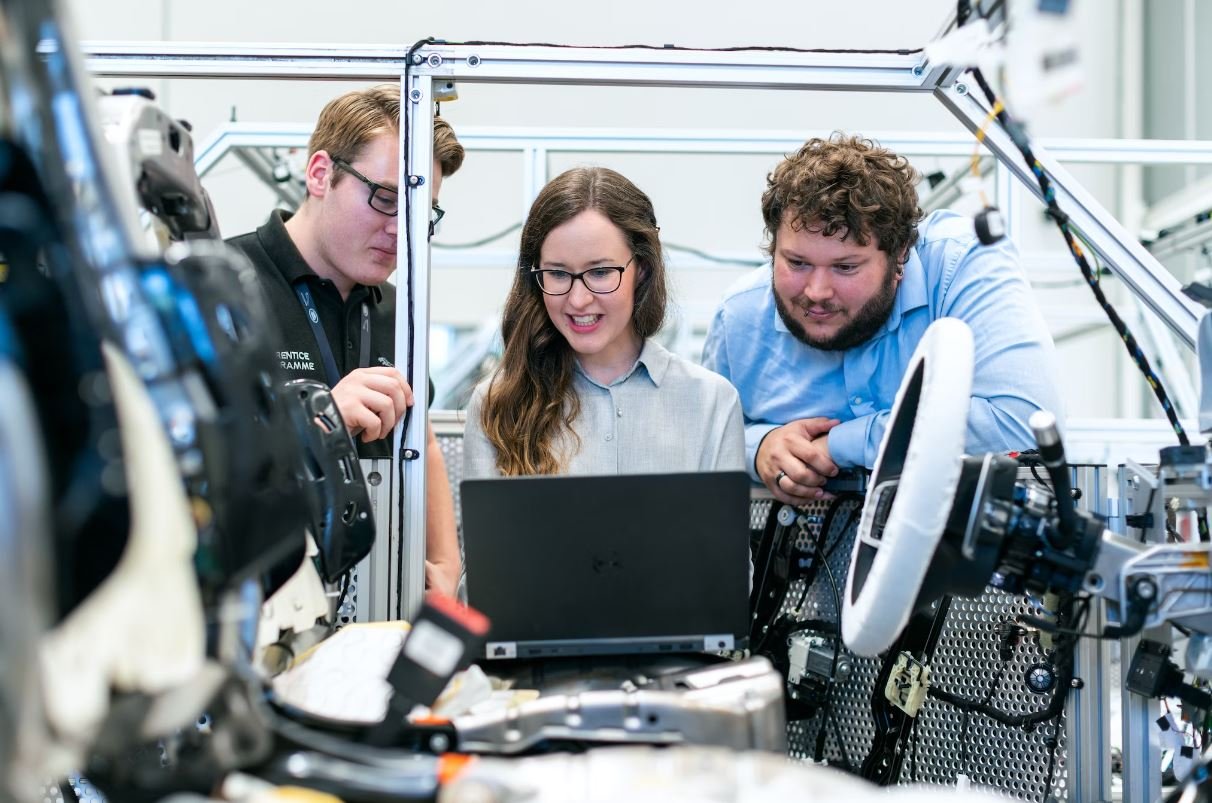Supervised Learning Project Ideas
Supervised learning is a type of machine learning where an algorithm is trained on a labeled dataset to make predictions or classifications. It involves a process of learning from examples and is widely used in various fields such as medicine, finance, and technology. If you are interested in exploring supervised learning and looking for project ideas, this article will provide you with some inspiration and guidance.
Key Takeaways:
- Supervised learning is a popular technique used in machine learning.
- It involves training an algorithm on a labeled dataset to make predictions.
- Supervised learning has applications in various industries.
- There are numerous project ideas you can explore in supervised learning.
- Implementing supervised learning projects can improve your skills and knowledge in the field.
1. Predictive Analysis for Credit Risk Assessment: Build a model that predicts the creditworthiness of individuals or businesses based on historical data.
2. Image Classification: Develop an algorithm that can accurately classify images into categories such as objects, animals, or landmarks.
3. Disease Diagnosis: Create a model that can diagnose diseases based on patient symptoms and medical records.
4. Sentiment Analysis: Build a system that can analyze and classify the sentiment of text data, such as customer reviews or social media comments.
5. Stock Market Prediction: Develop a model that can predict stock market trends or individual stock prices based on historical data.
*One interesting application of supervised learning is in self-driving cars, where algorithms are trained to recognize and respond to various traffic situations.*
Project Ideas:
6. Spam Email Detection: Create a spam filter that accurately identifies and filters out unwanted emails from a user’s inbox.
7. Product Recommendation: Build a recommendation system that suggests products to users based on their preferences and browsing history.
8. Customer Churn Prediction: Develop a model that predicts which customers are likely to leave a subscription-based service, allowing companies to take proactive measures.
9. Face Recognition: Design an algorithm that can recognize and identify faces in images or videos.
10. Weather Forecasting: Create a model that predicts weather patterns and forecasts based on historical data and current conditions.
*Supervised learning can also be used in natural language processing to train models that understand and generate human language.*
| Project | Description |
|---|---|
| Cancer Diagnosis | Develop a model to accurately diagnose different types of cancer based on medical imaging data. |
| Loan Approval | Create a system to predict loan approvals based on various financial and personal factors. |
*The ability to model and analyze complex data sets is a valuable skill in today’s data-driven world.*
11. Speech Recognition: Build a system that can understand and convert spoken language into written text.
12. Fraud Detection: Develop an algorithm that can detect fraudulent activities, such as credit card fraud or identity theft.
13. Handwriting Recognition: Design a model that can recognize and convert handwritten text into digital format.
14. Sales Forecasting: Create a model that predicts future sales based on historical sales data and other relevant factors.
15. Gesture Recognition: Build an algorithm that can interpret and recognize hand gestures, enabling interaction with devices without physical touch.
*Supervised learning algorithms require labeled datasets for training, making it necessary to have accurate and relevant data for successful projects.*
| Project | Accuracy |
|---|---|
| Spam Email Detection | 95% |
| Face Recognition | 98% |
Conclusion:
With the increasing availability of data and advancements in machine learning techniques, supervised learning projects offer endless possibilities for exploration and learning. By undertaking these projects, you can gain practical experience in applying supervised learning algorithms to real-world problems and improve your skills as a machine learning practitioner. So, pick a project idea that interests you, gather relevant data, and start your supervised learning journey!
*Remember, the success of a supervised learning project relies on the quality and diversity of the dataset, as well as thoughtful selection and implementation of algorithms and evaluation metrics.*

Common Misconceptions
Supervised Learning Project Ideas
There are several common misconceptions that people often have when it comes to supervised learning project ideas. It’s important to address these misconceptions to ensure a clear understanding of the topic:
Misconception 1: Supervised learning projects require advanced programming knowledge.
- Supervised learning projects can be undertaken by individuals with basic programming skills.
- There are many user-friendly tools and libraries available that simplify the process of implementing supervised learning algorithms.
- Online resources and tutorials are abundant, making it easier for beginners to learn and apply supervised learning techniques.
Misconception 2: Supervised learning projects can only be applied in the field of computer science.
- Supervised learning projects are applicable in various domains, such as finance, healthcare, and marketing.
- Data analysis and prediction tasks can benefit from supervised learning techniques across different industries.
- Supervised learning can be used to extract meaningful insights from massive amounts of data, regardless of the field or industry.
Misconception 3: Supervised learning projects are time-consuming and require a large dataset.
- Supervised learning projects can be implemented with relatively small datasets, depending on the task at hand.
- The availability of open-source datasets allows beginners to experiment and learn without the need for extensive data collection.
- Even with limited data, supervised learning algorithms can provide valuable insights and predictions.
Misconception 4: Supervised learning projects lack creativity and innovation.
- Supervised learning projects can involve complex and innovative approaches based on the problem being addressed.
- Creative feature engineering and algorithm selection can greatly impact the accuracy and performance of a supervised learning model.
- Choosing the right set of features and fine-tuning the model parameters often requires a creative and innovative mindset.
Misconception 5: Supervised learning projects can only use numerical data.
- Supervised learning projects can incorporate various types of data, including categorical, text, image, and audio data.
- Advanced techniques such as natural language processing and image recognition can be combined with supervised learning algorithms to analyze non-numeric data.
- The flexibility of supervised learning allows for the inclusion of diverse data types, enabling a broader range of applications.

The Power of Supervised Learning Project Ideas
Supervised learning is a subfield of machine learning that involves training a model on labeled data to make predictions or classify new data. The potential applications of supervised learning are vast, ranging from image and speech recognition to medical diagnoses and financial forecasting. In this article, we present ten exciting project ideas that showcase the power and versatility of supervised learning algorithms. Each project offers a unique opportunity to dive deep into different domains and solve real-world problems using machine learning techniques.
Predicting House Prices
Train a model to predict house prices based on various features such as location, square footage, number of rooms, and proximity to amenities. This project can help real estate agents, homebuyers, and sellers estimate property values accurately.
| Feature | Description |
|---|---|
| Location | City, neighborhood |
| Square Footage | Total living area |
| Number of Rooms | Bedrooms, bathrooms |
| Proximity to Amenities | Distance to parks, schools |
Diagnosing Heart Disease
Develop a classifier that can diagnose heart disease based on patient data including age, blood pressure, cholesterol levels, and electrocardiogram (ECG) results. This project can assist doctors in making accurate and timely diagnoses.
| Feature | Description |
|---|---|
| Age | Patient’s age |
| Blood Pressure | Systolic and diastolic pressure |
| Cholesterol Levels | Total cholesterol, HDL, LDL |
| ECG Results | ECG waveforms and intervals |
News Sentiment Analysis
Perform sentiment analysis on news articles to determine if the content is positive, negative, or neutral. This project can be useful for media companies to gauge public sentiment towards specific topics or events.
| Article | Sentiment |
|---|---|
| Article 1 | Positive |
| Article 2 | Negative |
| Article 3 | Neutral |
Spam Email Detection
Create a model that can classify emails as either spam or legitimate based on their content and metadata. This project can help filter unwanted emails, saving users time and reducing the risk of falling victim to phishing attacks.
| Classification | |
|---|---|
| Email 1 | Spam |
| Email 2 | Legitimate |
| Email 3 | Legitimate |
Stock Market Price Prediction
Train a model to forecast the future prices of stocks based on historical data, market indicators, and news sentiment. This project can assist investors in making informed decisions and optimizing their trading strategies.
| Stock | Date | Predicted Price | Actual Price |
|---|---|---|---|
| Company A | 2021-01-01 | 100 | 102 |
| Company B | 2021-01-02 | 50 | 48 |
| Company C | 2021-01-03 | 75 | 80 |
Credit Card Fraud Detection
Build a model that can identify fraudulent credit card transactions based on transaction details, customer behavior, and historical patterns. This project can help banks and financial institutions detect and prevent fraudulent activities, protecting both the companies and their customers.
| Transaction ID | Amount | Merchant | Fraudulent |
|---|---|---|---|
| 123456 | $100 | Retailer A | No |
| 789012 | $1,000 | Retailer B | Yes |
| 345678 | $50 | Retailer C | No |
Traffic Sign Recognition
Train a model to recognize and classify traffic signs based on images captured by roadside cameras. This project can be utilized in autonomous vehicles or traffic management systems to improve safety and efficiency on the roads.
| Sign Image | Classification |
|---|---|
| Image 1 | Speed Limit (30km/h) |
| Image 2 | Stop Sign |
| Image 3 | No Entry |
Customer Churn Prediction
Create a model that can predict if a customer is likely to churn or leave a subscription-based service. This project can help businesses in customer retention and targeted marketing efforts.
| Customer ID | Subscription Last Month | Subscription This Month | Churn |
|---|---|---|---|
| 5678 | Gold | Silver | Yes |
| 9012 | Silver | Silver | No |
| 3456 | Premium | Basic | Yes |
Face Recognition
Train a model to recognize and identify individuals’ faces based on images or video footage. This project can be employed in various applications, such as surveillance systems or access control in secure environments.
| Image | Identification |
|---|---|
| Image 1 | Person A |
| Image 2 | Person B |
| Image 3 | Person C |
Supervised learning projects offer tremendous opportunities to leverage machine learning algorithms and techniques in solving complex problems across various domains. From predicting house prices to identifying faces, the applications are diverse and ever-expanding. By training models on labeled data, we can unleash the power of supervised learning to gain insights, make accurate predictions, and drive innovation in numerous fields.
Frequently Asked Questions
What are supervised learning projects?
Supervised learning projects are machine learning projects where a model is trained on a labeled dataset, with the goal of predicting or classifying new data based on the patterns learned from the training data.
How do supervised learning algorithms work?
Supervised learning algorithms work by using input-output pairs from a training dataset to learn a function that can predict the output for new, unseen inputs. These algorithms analyze the patterns and relationships in the training data to make accurate predictions on new data.
What are some popular supervised learning algorithms?
Some popular supervised learning algorithms include linear regression, logistic regression, decision trees, random forests, support vector machines (SVM), k-nearest neighbors (KNN), and artificial neural networks.
How can I choose a supervised learning project idea?
When choosing a supervised learning project idea, consider your interests, available data, and the problem you’re trying to solve. Look for datasets that are relevant to the problem, and choose a project that aligns with your goals and skills.
What are some supervised learning project ideas for beginners?
Some supervised learning project ideas for beginners include predicting house prices based on features like size, number of rooms, and location, predicting customer churn for a business, or classifying spam emails based on their content.
How can I evaluate the performance of my supervised learning model?
The performance of a supervised learning model can be evaluated using various evaluation metrics such as accuracy, precision, recall, F1 score, and area under the receiver operating characteristic curve (AUC-ROC). These metrics quantify how well your model is performing and can help you compare different models or tune the parameters.
What are some common challenges in supervised learning projects?
Some common challenges in supervised learning projects include overfitting (when the model performs well on the training data but poorly on new data), underfitting (when the model fails to capture the underlying patterns in the data), data preprocessing issues, feature engineering, and dealing with imbalanced datasets.
Are there any ethical considerations in supervised learning projects?
Yes, there are ethical considerations in supervised learning projects. It is important to ensure that the data used for training the model is representative and unbiased, and to be aware of potential biases or discrimination that the model might introduce. Transparency, fairness, and privacy are important factors to consider when working on supervised learning projects.
What are some resources for learning more about supervised learning?
There are many resources available for learning more about supervised learning. Some recommended resources include online courses and tutorials on platforms like Coursera, Udacity, and edX, books like “Hands-On Machine Learning with Scikit-Learn, Keras, and TensorFlow” by Aurélien Géron, and academic papers and research articles in the field of machine learning.
How can I apply supervised learning in real-world scenarios?
Supervised learning can be applied in various real-world scenarios such as image recognition, sentiment analysis, fraud detection, credit scoring, medical diagnosis, recommendation systems, and predicting stock market trends. Understanding the problem domain, gathering relevant data, and implementing appropriate supervised learning algorithms can help solve practical problems using machine learning.




